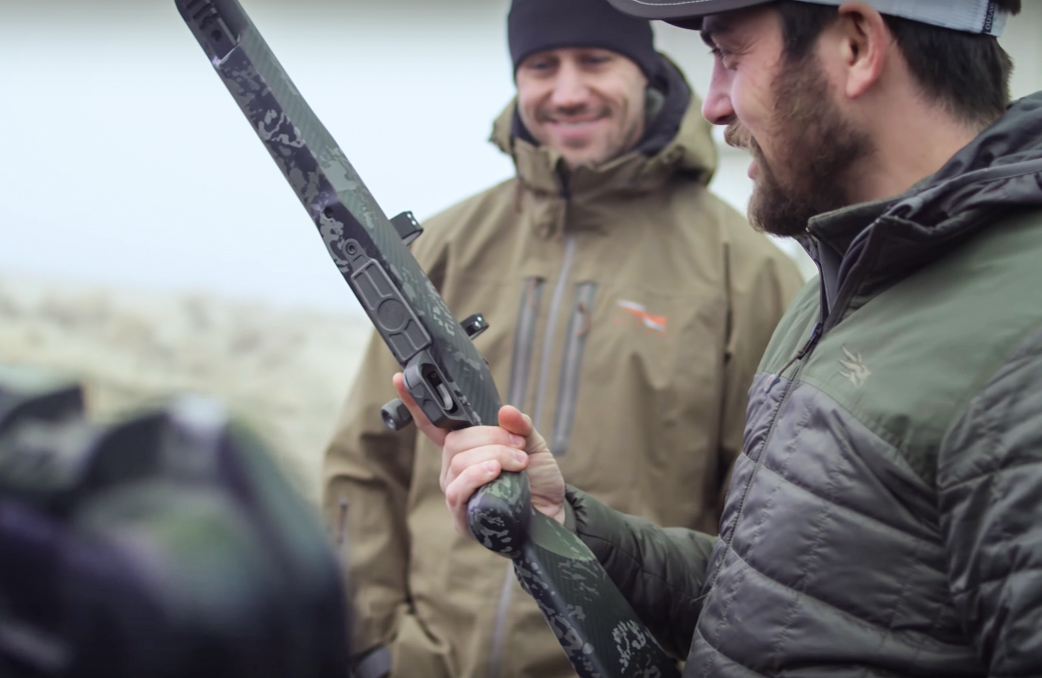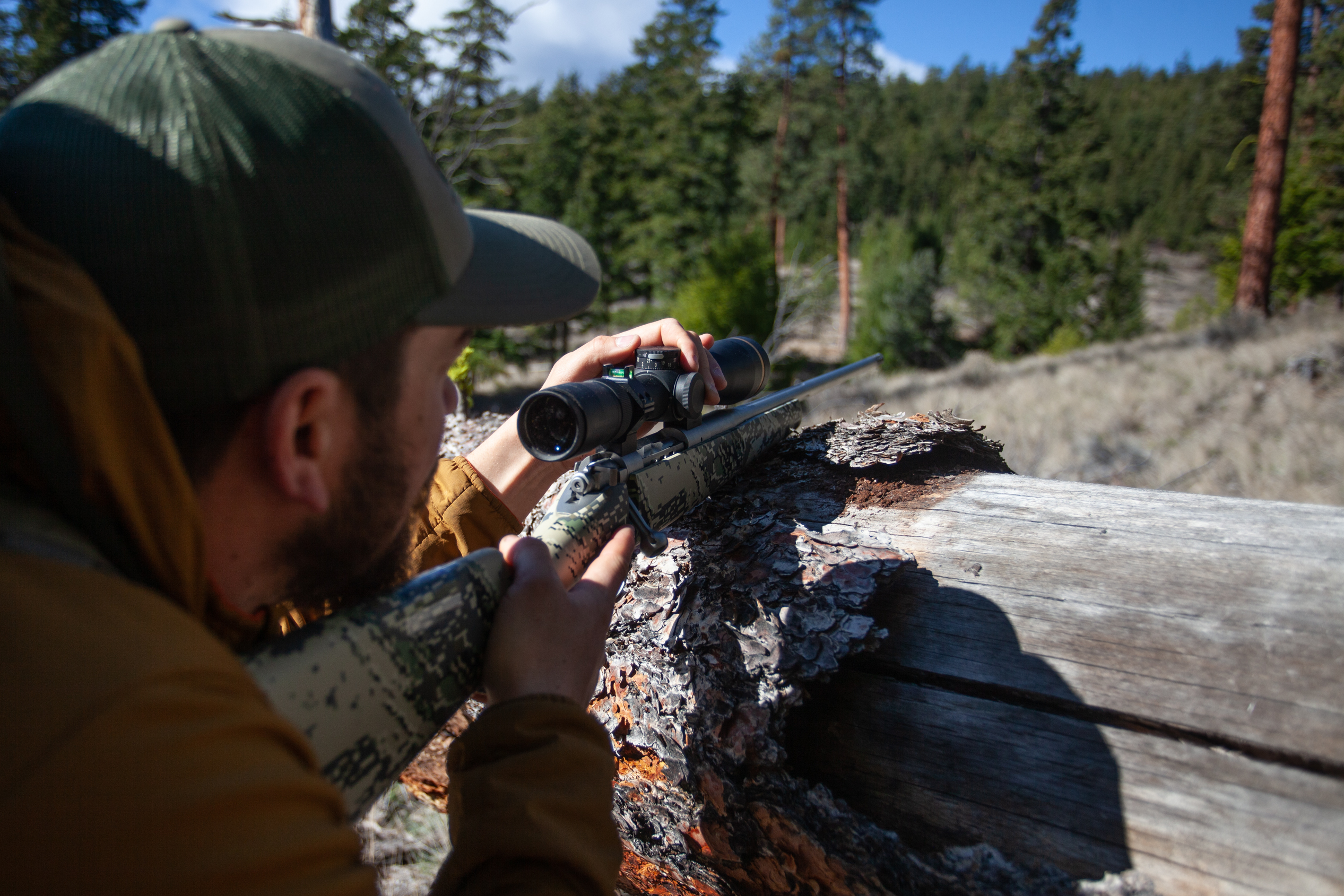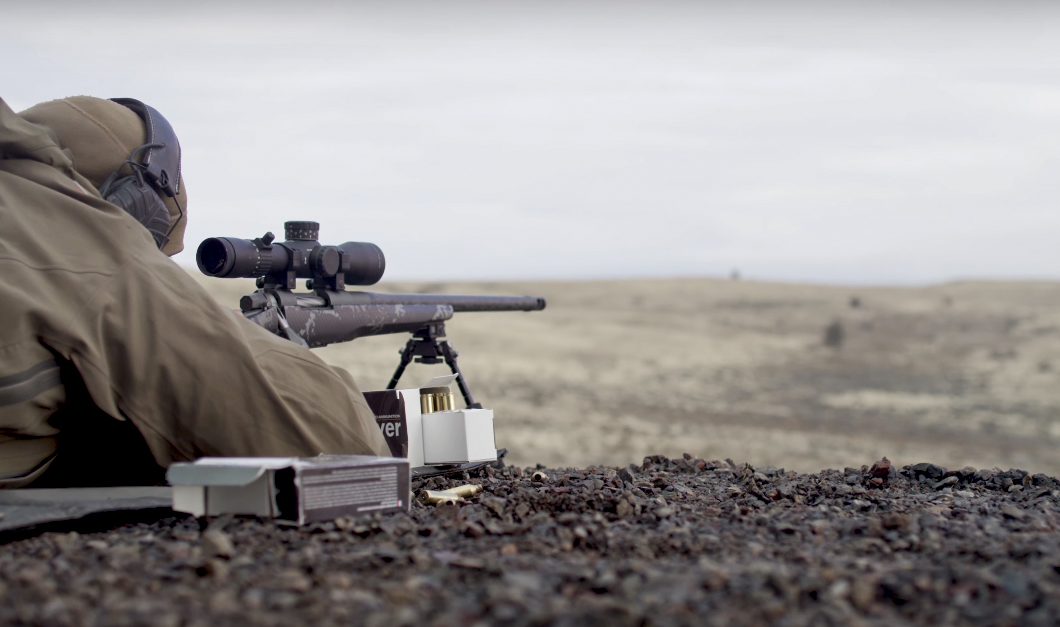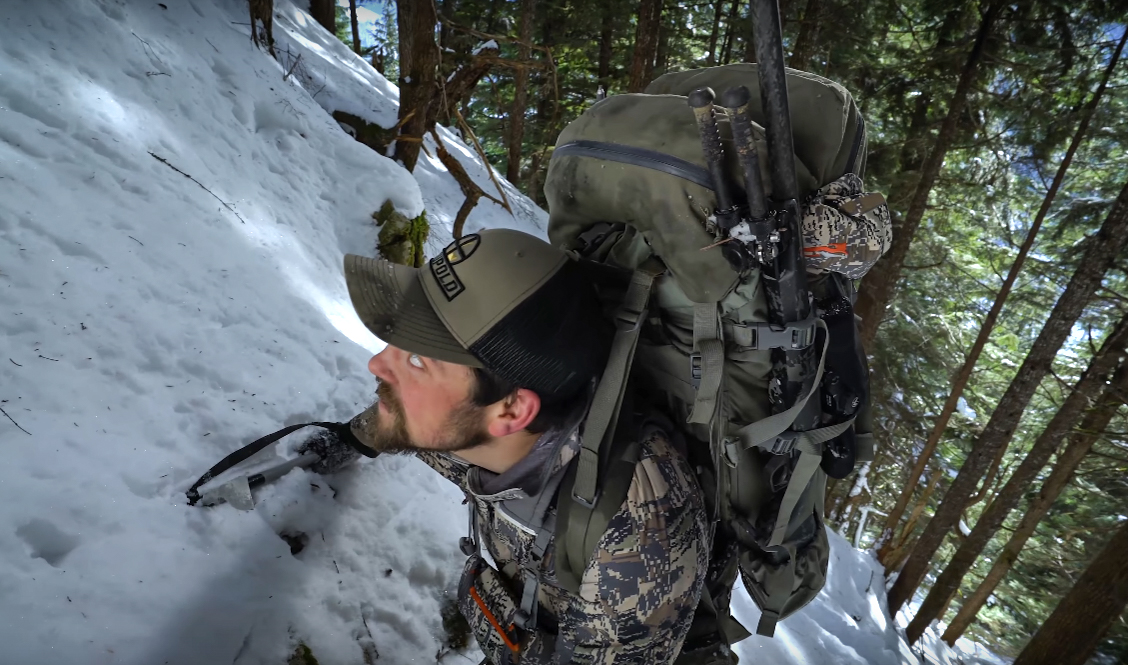The idea of a mountain rifle has evolved over time, and in many ways it still is. Jack O’Connor was one of the earlier pioneer’s of this concept, with his famous Sheep Rifle No.2 helping propel the idea to new heights. While he may have used many rifles over his career, his rifle of choice was a Winchester Model 70 Featherweight chambered in 270 Winchester, that he picked up in 1959 at a hardware store in Lewiston, Idaho.
Regardless, the mountain rifle is many things to many different people. For some, it may simply be the rifle they first hunted in the mountains with. One that they took their first mountain game with, regardless of the build, weight, or optics. For others, it may be a family heirloom. Or perhaps a sort of “franken-rifle” that started in one configuration and has now seen more facelifts than a Beverly Hills surgeon. We’ve all got our preferences, right or wrong.
I grew up in eastern Canada, the land of rolling hardwood forests and farm fields. Most of the deer were taken inside of 100 yards, and your treestand was usually only several hundred yards from a truck or quad. I went through a plethora of rifles in my earlier years as a hunter, most of them stocked in walnut with blued actions and barrels. It wasn’t until I moved to British Columbia that I saw the utility of composite stocks and stainless steel.
Over time I found my purchases were trending towards lighter, slimmer rifles. They felt better on my shoulder, and in the hand. Admittedly, I do think there’s an element of aesthetics that comes into play on a slim, trim, handy rifle, even if the utilitarian in me hates to admit to it. Utility aside my idea of a dream rifle, the ones that stir me the most, are those with a nicely figured walnut stock with an ebony forend. Add a controlled round feed action, floorplate magazine, iron sights (banded front please), and a deep blue on the works. Perhaps ironically, I do not own one of these. The closest I ever got was a Kimber Classic Select, but it lacked the iron sights and deep blue to truly make it a “classic”.
That Kimber, an 84M action chambered in 308 Win, was my entry point to the mountain rifle. Since then, I have owned a number of rifles intended to be used in the mountains and handled a good number more of my clients. Over the years, I have developed my own concept of what the mountain rifle is, and is not. Unsurprisingly, it shares a common bond with my “dream rifle” — a controlled round feed action. I won’t go into this one, as it is not worth the words, but I prefer a controlled round feed action to any other bolt action. Call it irrational if you will, but I don’t see that changing anytime soon.
To me, the ideal mountain rifle should sit at or under seven pounds, scoped. It should have a stainless or cerakote finish, composite stock, three position safety, and preferably a controlled round feed action. Most of you are aware at this point, that this weans out the majority of factory rifles out there. Full customs aside, Kimber is the one company that hits all the marks for my idea of a mountain rifle, with a match grade chamber and trigger. I am aware that not everyone has the same ideals, so here are some of my top picks for a modern mountain rifle in a couple different price ranges, based on my own experience.

Goat country. Home of the lightweight rifle. Photo: Trousdell Media
Kimber Mountain Ascent
Those who know me well, know that I am a big fan of Kimber rifles. As I mentioned previously, they check my boxes when it comes to mountain rifles. As far as factory rifles go, they seem to be one company that is focused more on long-standing utility, than what is currently trending. I first fell in love with their scaled 84M action, and the trim stock I had on the Classic Select. After I moved to British Columbia and spent a season hunting the rainforest of Vancouver Island, I finally understood why ‘ugly’ stainless and composite rifles exist.
The Kimbers barrel/action required meticulous cleaning after encountering any kind of moisture, and the stock was starting to see some of the scars from crawling up mountains. I decided to part with it and acquired a Kimber Montana in 300WSM. For those who aren’t ultralight junkies or lefty’s, this might be the perfect mountain rifle, particularly in the 84M & 84L (short and long) actions. They come in at 5lbs 2oz and 5lbs 10oz, with full-length barrels to boot. The 8400 magnum comes in closer to other manufacturers lightweight guns, and the 8400 WSM series shaves a bit from that. Those 8400 doesn’t quite make the cut in my eyes, though my 8400wsm Montana did fall at 7.1lbs scoped, so still plenty light.
The Kimber Montana did me well and without much fuss. The only amount of “wear” it really ever showed was a few scuffs on the stock, and a bit of surface rust after two weeks on the ocean inlets chasing goats. Getting splashed daily with salt spray will do that to a gun so I won’t hold that against it.
Last fall I sold the Montana and picked up a Kimber Mountain Ascent in 280 Ackley Improved. I’d pined after this model since it came out, but I could never justify the price tag. My first hunt in August was a particularly good one, another guide and I had a doubleheader on stones sheep with a father/son client, so I decided I was going to treat myself. I ordered a Mountain Ascent via InReach from Precision Optics in BC, and picked it up on my drive south from the mountains mid-October.
The Mountain Ascent is a somewhat skeletonized version of the Montana rifle. The same barreled action, stock, and trigger as the Montana, but with a fluted bolt handle, bolt and barrel, as well as a lightened trigger guard, and a stock muzzle break. Honestly, the weight savings vs additional cost won’t make sense to a lot of folks, and maybe it doesn’t make sense at all. My 280ai has a listed weight of 5lbs 6oz, while the 280ai Montana is 5lbs 10oz — about $250 per ounce shaved. Either way, I wanted the lightest factory 280ai I could get without completely breaking the bank.
Paired with a Leupold VX5-HD 3-15×44 CDS-ZL2 and Talley UL rings, my rifle sits at 6lbs 11oz on the scale, a fine weight for carrying around all day in the mountains. The 280ai is pretty hard to beat for a “one gun for everything” in British Columbia. Its ballistics are knocking on the 7mm Rem Mag’s doorstep, with less powder, recoil, and out of a smaller, slimmer action. For more info on the 280 Ackley Improved, check out Ron Spomer’s article “280 AI, My, My, My”
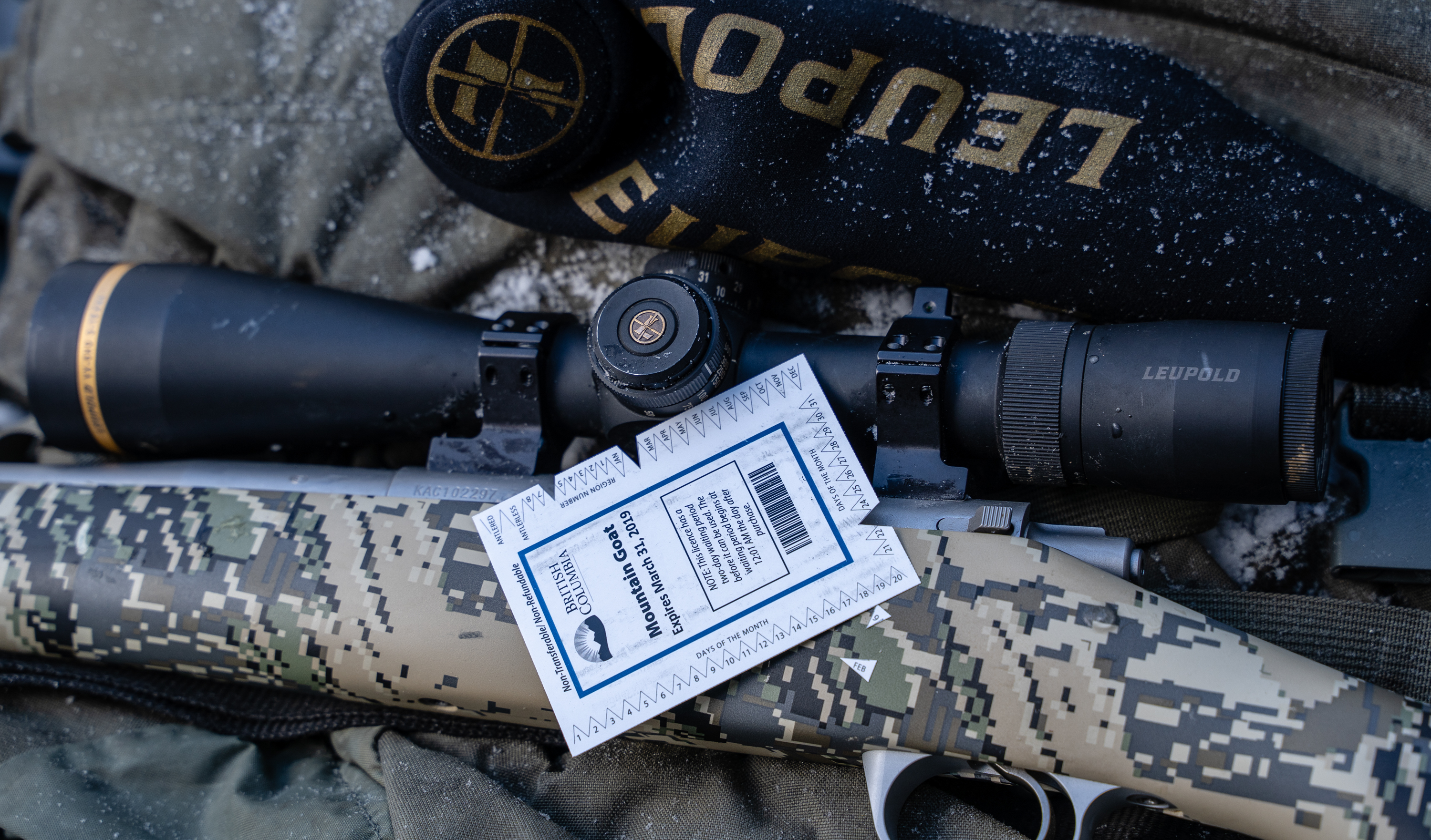
Photo: Trousdell Media
Currently, my Mountain Ascent is shooting Hornady Precision Hunter – 162gr ELD-X in sub-moa groups when I do my part and the barrel stays cool, though the future will likely see me reloading for this. Ammo availability in Canada can be spotty — though 280 Rem ammunition can be found more commonly and used in a pinch — and given the cost of the rifle, it only makes sense to eke out as much performance as possible. For hunting purposes, it has been plenty accurate over 500 yards on game, and has achieved kill sized groups at 730 yards, the furthest I have shot it thus far.
The Mountain Ascent retails for around $2000 USD or $3000 CAD and can be found in 6.5 Creedmoor, 7mm-08, 270 Win, 280 Ackley, 308 Win, 30-06, 300 WSM, 270 WSM, 7mm Rem Mag and 300 Win Mag.
Gunwerks Clymr
I was once told, “The only folks that talk trash about the highest end stuff, are the ones that can’t afford it.” I believe the conversation at the time was about sports cars, but the same applies to rifles. Before I dive into this one, I’d like to put a few things on the record. I do own a Gunwerks. I am aware that they don’t count as “factory” rifles. I am aware that they are priced well outside of what the majority of North American hunters will spend on a rifle. Hopefully, that will quell some of the knee jerk “they are too expensive/overpriced” that comes whenever someone mentions Gunwerks.
Over the seasons, I have seen a number of Gunwerks LR1000’s come through my hunting camps, primarily sheep hunters. As a wrangler, I also carried a number of them on my pack, to lighten the load for my client, and still do occasionally as a guide. I handled them, saw how they shot, and got to fire a couple. They were all incredible rifles with excellent ergonomics, and unsurprisingly, shot better than most of the people behind them. But, and this was a big “but” as I was often carrying them, they were too heavy for a ‘sheep rifle’ in my eyes. Most of them would have been over 10lbs, knowing the scope/ring/tripod combinations that were on them.
In 2018, Gunwerks rectified that with the launch of the ClymR rifle. The ClymR was conceived as minimalist, mountain-mission ready long range capable platform, and it certainly achieves that.
I first became acquainted with this rifle at the Leupold Optics Academy, where the Adam Janke & I took a shooting & shooter/spotter relationship course in January of 2018, prior to a February mountain goat hunt we were going on. It was Adam’s rifle, a Gunwerks ClymR in 6.5 PRC, but I would be the one hunting with it. Over two days at the L.O.A, I was able to put close to 200 rounds through the rifle, getting a chance to become acquainted with it from 100 to 1000M. Prior to this, I had never shot past 450 yards, so a 1000M steel range was intimidating, and exciting.
The ClymR shot incredibly well with 140gr Berger VLD’s, though that should be an expectation with a rifle that costs this much. Where I was most impressed, was with its stock. Gunwerks obviously put a lot of time and consideration into this, as its neither a standard ultra-light mountain stock nor a lighter fill option of one of their standard long-range stocks of the past. As Aaron Davidson of gunwerks states, “Most of the work that you put into defining what that system is going to do, and how it’s going to serve the customer, is around the rifle stock. With the ClymR rifle system, we have engineered a new rifle stock. Some of the things we have chased here are the size and weight.”
The forend is shortened and slimmed down, optimized for shorter barrels in the 18-22” range, and it features negative comb to aid in muzzle jump and help reduce the felt recoil. The toe line of the stock is flatter than your standard mountain rifle as well, a welcome feature when you are stretching out a little further and want to use a rear bag — backpacking medi-kit pouches are a good option. As well, it has a more vertically oriented grip, common with long range rigs, and a unique palm swell and thumb shelf design, which seems to provide better hand placement for precision shooting, across a wide variety of hand sizes.
The ClymR I used was built with the intent to climb mountains, regardless of the size or how thick and shitty the timber in the bottom is. It was built on a Titanium GLR action, Carbon ClymR stock, Trigger Tech trigger, 18” Proof Research carbon wrapped barrel with a direction muzzle brake, and cerakote on the bottom metal and action. The barrel rifle came in around 6lbs 4oz, while topped with a Leupold Mark 5HD 3.6 -18×44 and 35mm steel rings, it came in at 8lbs 8oz. Not exactly a featherweight, although you could shave close to a pound off by switching to a lighter scope & aluminum rings if you wanted to, placing this rifle in contention with the seven pounders.
It is balanced well in the hand, and compact enough that you don’t really notice it strapped to your pack, even while climbing through slide alders and blowdown. With perhaps a small exception to its weight — even with a lighter scope –, this is the only rifle that I have ever handled that I felt made no concessions. Ultralight mountain rifles make sacrifices to achieve weight limitations as a rule, and that usually comes in the form of pencil thin barrels and stock designs that aren’t made with precision shooting in mind. Gunwerks found a way to blur the line between the true featherweights, and the heavy long range precision rifles, and they did a damned good job at it. If you don’t mind the price tag, I guarantee you will not find a better precision mountain hunting rifle.
Gunwerks ClymRs are offered in 22 Creedmoor, 22-250, 28 Nosler, 30 Nosler, 6.5 PRC, 300 PRC, 300 Win Mag, 6 Creedmoor, 6.5 Creedmoor, 6.5-284, 7 LRM, 7 SAUM, and 7mm Rem Mag. They start at $5750 USD for the bare rifle, and the scoped rifle build is $10’463.99 USD in the configuration we had.
Kimber Hunter
Considering the first two rifles on this list were what I would consider expensive, and very expensive, I feel it’s important to throw a couple of the more affordable options in the mix. Admittedly, I am not a huge fan of the feel of moulded polymer (often called Tupperware) stocks in the hand, but I have owned half a dozen of them and they have never done me wrong. I also avoid detachable box magazines on a mountain rifle. I prefer a blind magazine, as there is no chance of losing rounds going through the thick stuff, and see absolutely no use to a detachable magazine in the mountains. One more thing to lose and if you need more than a magazine worth of ammunition to get the job done, your gun is either out or more likely, you are shooting too far for your abilities.
The Hunter is Kimber’s nod to the budget rifle, while still providing enough value that you may pass it on to future generations. It features the same barreled action as the Montana line up, with a match grade chamber & trigger, but swaps the hand laid composite stock for a polymer injection one. I’ve only had the chance to handle a couple, but they maintain the same stock lines as the Mountain Ascent & Montana, so the fit is very similar. As it features the same barreled action, performance is right there with the Montana’s I have owned, and the weight is very reasonable at 5lbs 7oz in the 84M action and 5lbs 11oz in the 84L action.
For those on a strict budget with a hankering for the lightweight, this is arguably the best rifle on the market. To my mind, the value of a quality controlled round feed action, trigger, three position safety, and minimal weight justify the price bump from popular budget rifles like the Ruger American.
Kimber Hunter’s are made in both stainless and blued and offered in eight chamberings from 243 Win through 30-06. They retail for around $799 USD or $1296 CAD.
Tikka T3X
As common as they are, I don’t feel I need to spend much time talking about the Tikka T3x. A quick google search will reveal very few poor reviews about it. I have owned several in the last decade, and like most Tikka’s they shot incredibly well with pretty good factory triggers. They are the quintessential no-frills, working rifle, and perhaps the most bang for your buck of any rifle on the market. I can’t say I am particularly enamoured by the stocks feel, but they are durable, accurate rifles that don’t break the bank.
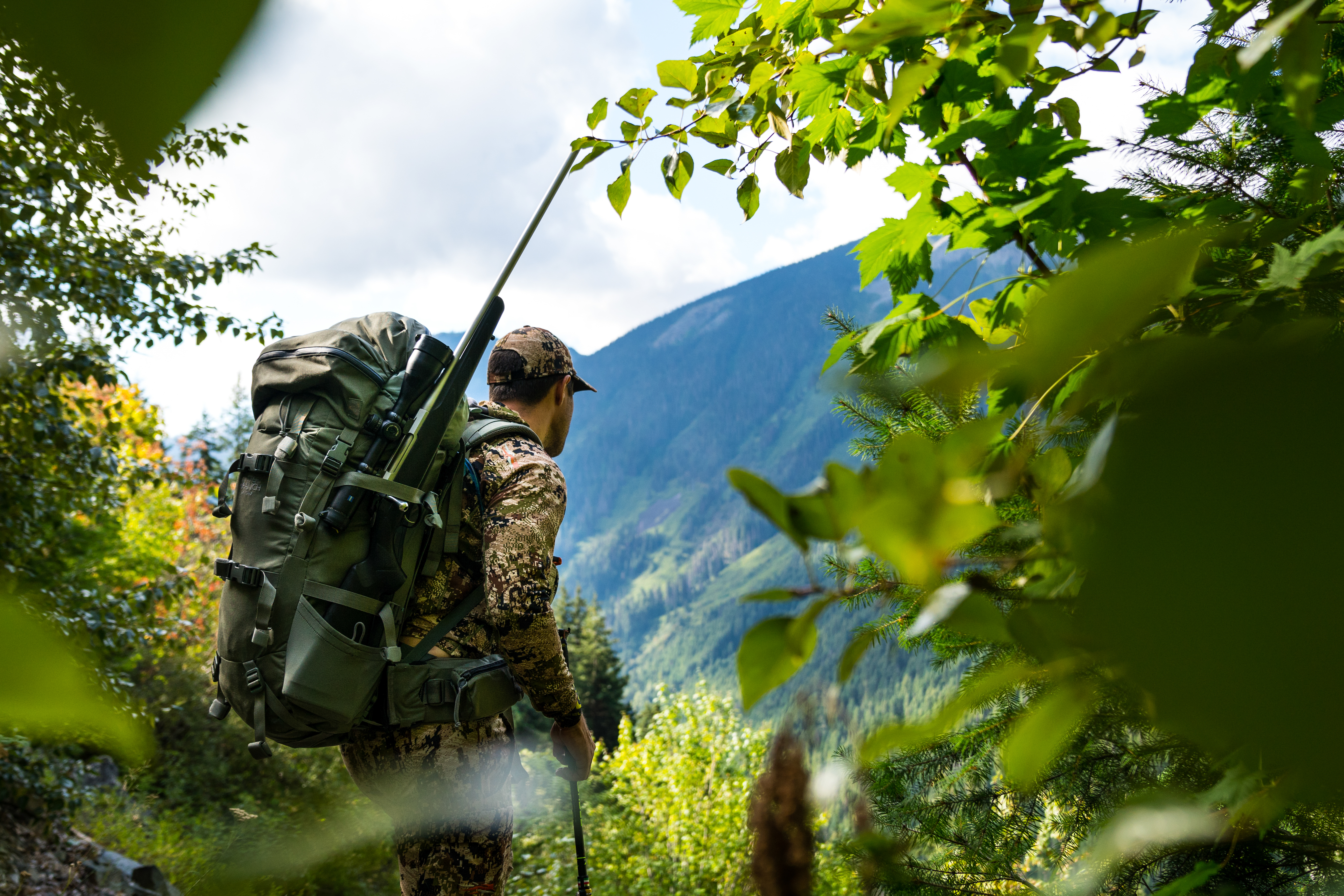
Photo: Talus Creative
I know plenty of guides and avid mountain hunters that swear by a stainless Tikka, and I have directed many a new hunter to their rifles. They can be a great platform to customize a build off as well, with major manufacturers providing virtually everything you could want to swap out and upgrade on them. As someone who has a preference in smaller, slimmer rifles, it does pain me that they use the same size action for every cartridge they chamber, though that isn’t the end of the world in reality.
As the action size is maintained throughout the lineup — from 204 Ruger to 338 Win Mag — there is little weight variation in the rifles, with them tipping the scales between 6lbs 3oz and 6lbs 9oz. For those looking for a Magnum, you are in luck as these often weigh less than the competitors. Kimber’s Montana in 300 Win Mag comes in at 6lbs 13oz and around $1000 more (CAD).
Tikka T3x Stainless are offered in 19 different chamberings from 204 Ruger through 338 Win Mag, and retail for around $799 USD or $1100 CAD
Editors Note: Ultralight rifles often get a bad rap for not being accurate. In my experience with Kimber rifles, they can be finicky with regards to which factory ammo they like, but I have always found one that shoots under an inch. Scoped rifles that weight less than 7lbs are harder to shoot accurately. Every inconsistency in your form will be amplified as the rifles do not have as much mass to absorb your flaws. Food for thought before you dismiss the featherweights.


